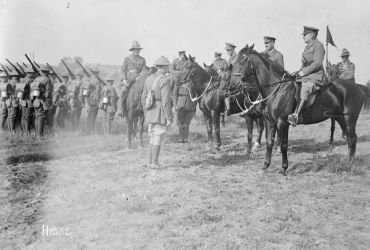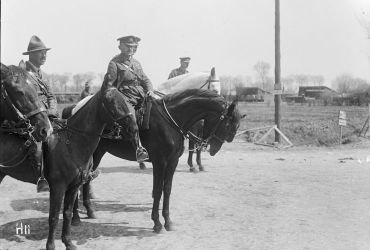War Horse World War 1 background.
Thank you for this opportunity to present to you our proposal to honour the valiant service of the more than 10,000 horses that served beside the 100,000 brave Kiwi servicemen and women who fought for our freedoms during the entire length of the First World War of 1914 /1918. Those silent equine warriors endured horrific conditions amongst the gas and the firepower, the barbed wire and the landmines, the dead and dying on battlefields as diverse as the mud of Passchendaele and the deserts of Sinai. Because horses had not been greatly used at Gallipoli the majority of the New Zealand forces served unmounted while their mounts had been rested in Egypt awaiting the return of the weary Anzacs from that ill-conceived attempt to conquer the Turks in 1915. After a distinguished command at Gallipoli that included his amazing planning of the successful overnight retreat from Gallipoli, Hawke’s Bays own Major General Sir Andrew Russell was knighted for his success and was recalled to the Western Front in France where we understand he was united with his mount Dolly, the subject of our project of remembrance. After a period of rest and recovery near Cairo for the Gallipoli veterans, the 17,725 man New Zealand Mounted Rifles Brigade, reformed and reunited with their mounts, then set out to engage the enemy in battles to drive them back from the Suez Canal through Palestine and Syria to the ancient city of Damascus, along the way liberating the Holy City of Jerusalem after 400 years of Ottoman Rule.
Generally accepted is the assumption that most of the Brigade’s mounts were mares, greater than 15 hands, and although not as outstanding in looks as the smaller Australian horses, they were much more resilient, with greater stamina that out-performed the breeds from the other allied forces. A small number of draught horses were also sent from New Zealand to move artillery, associated military materials and general support. The Middle East campaign advanced 400 miles in the 3 year engagement, with the loss of 1700 men, a far greater achievement than that in France prior to the Armistice.
A typical load for a military mount complete with tack in the desert was upwards of 120 kg of rider, personal gear and bedding, cans of bully beef, equipment, weapon, ammunition, plus the critical horse feed and water for both mount and rider to last for 2 days. At times leather muzzles had to be fitted to the horses to prevent them from eating sand. At times as little as 2kg of grain was the horses daily ration carried. The water supply was another major problem especially when the enemy resorted to poisoning and/or contaminating oasis wells while retreating. The soldier’s issue of little more than 1 litre of water per day for ALL usage was compounded when on occasion there was no water available whatsoever for as much as 72 hours. Privations such as described have motivated us to record and particularly honour the amazing selfless mahi that the New Zealand Mounted Rifles Brigade undertook on our behalf.
These efforts are recognised on Anzac Day and to a lesser degree on Armistice Day. As for their horses, there has been no such permanent public recognition to date other than the statue Te Utu in Hamilton and now it is time to right that wrong. Time to build a monument to firstly acknowledge that, of the 10,000 plus horses that left New Zealand during World War One, ONLY 4 RETURNED HOME AFTER THE ARMISTICE in 1918. Major General Sir Andrew Russell’s mount Dolly was one, and she came here to Tunanui Station at Sherenden, Hawke’s Bay, and now it is time to put her near her much decorated master “The General”.
They shall grow not old as we that are left grow old,
Age shall not weary them, nor the years condemn,
At the going down of the sun, and in the morning,
We will remember them,
We will remember them.
Lest we forget.
Kei wareware tatou



